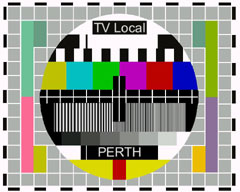
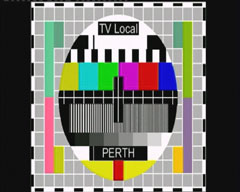
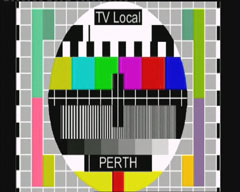
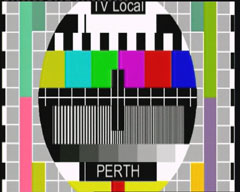
International Standards Conversion
It converts in and out of NTSC and PAL and, unusually especially considering
the low price, inputs and outputs SECAM. It also handles pseudo PAL and every other
permutation you can think of, including South American PAL.
I was greatly impressed with the conversion quality
and did a side-by-side comparison with our own broadcast Prime Image Penta II -
which cost around £5000. It comes a surprisingly close second. The only quality
differences are quite subtle, mainly noticeable in pans when converting PAL to NTSC.
There was noticeable judder and horizontal shimmering but no converter is totally
transparent, regardless of cost.
For the vast majority of footage, especially if it
does not contain an enormous amount of movement or detailed graphics, you would barely
notice the conversion. One thing I did observe was that NTSC to PAL was subjectively
better than the reverse. The SECAM conversion in all directions is also excellent.
This unit blows converter-type VCRs such as the
W1 right out of the water.
Aspect Ratio Conversion
This feature comes right near the end of the manual, almost as if it were an
afterthought. But in my opinion it could prove its most useful benefit and probably
justifies the £300 asking price on this feature alone.
That is because if you are shooting and editing
your programmes in 16x9 you need to output it in a variety of formats so it looks
equally good when it has to be viewed on a conventional 4x3 TV.
It is no good sending customers a full height or
anamorphic viewing tape - ie one stretched out in a vertical direction. With this
unit you can output in letter box, 14x9 and full screen 4x3. You can do the reverse
by pillar boxing conventional 4x3 source material to fit within a 16x9 frame.
There is a little bit of degradation in this mode
because it involves zooming the central part of the image, but it is fairly
transparent up to 14x9. Zooming up to full 16x9 means you start to lose lower
third straps, but 14x9 is a good compromise used by most of the broadcasters and
is perfectly acceptable.
This aspect ratio conversion is superior to most
DVEs because they can generally only reduce image width and height. This feature
requires zooming beyond the maximum frame size and this unit does it well.
This mode is engaged by holding in the output type
button for two seconds on power-up. Keeping the button depressed for five seconds
causes the unit to toggle between letter-box and pillar box. The PAL button then
functions as a zoom in the horizontal direction or vertical and horizontal direction.
This can be confusing initially but I have included
some illustrations of pillar boxing and letter-boxing for you to see how it works.
A test-card initially is quite useful to enable you to play with the unit and see
what it does on widescreen and conventional TVs. That is better than experimenting
with conventional footage, as it is sometimes difficult to see what you are trying
to achieve.
Pillarboxing: (GTH Note: All shown on 4:3 screen. Pillarboxed images display correctly on a 16:9 screen.)
4:3 Test Card Electronic Source
 |
4:3 Pillarboxed to 16:9, No Zoom
 |
4:3 Pillarboxed to 16:9, Zoomed up to 14:9
 |
4:3 Pillarboxed to 16:9, Zoom to Full Width
 |
Letterboxing: (GTH Note: All shown on 4:3 screen. This is why the original 16:9 image is stretched vertically.)
16:9 Anamorphic Test Card Source
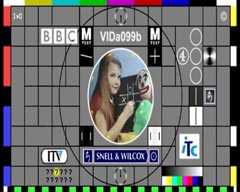 |
|
16:9 Letterboxed to 4:3, Zoomed up to 14:9
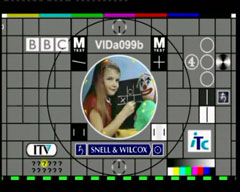 |
16:9 Letterboxed to 4:3, Zoom to Full Height
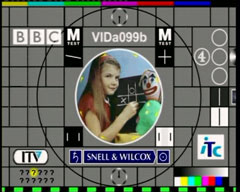 |
Time-base Correction with Colour Positioning Feature
This corrects the one line drop in chroma when playing back VHS tape. You are
able to shift it up to four lines if you are dealing with tapes which have been
subjected to multiple copying, as a VHS recorder shifts the colour down by one
line each time it is recorded.
Without time-base correction after multiple copying,
on things like captions the registration would be wrong and the colour filling
each letter would be lower than its outline. You have also got horizontal shift,
plus or minus to deal with horizontal bleed.
No further comments: the ACE unit does what
it says on the box.
Colour Controls
Unusually, this unit has full colour correction on all three RGB channels
which means you have infinite scope for correcting white balance errors plus
placing a colour cast to create a visual effect like warmth on a sunset image.
Used in conjunction with the saturation control, this can enhance the creativity
of your work.
My experimentation included creating a highly
saturated yellowish image which would lend itself to creative commercials. There
is also a video invert option, which is quite useful for copying photographic
negatives to video. The colour controls are useful to optimise the colour balance
of the final output and achieve natural skin tones.
Widescreen Signalling Option P
This was a unit submitted for review where the audio and manual buttons have
been substituted for 16x9 and letterbox. What this feature does is include a data
packet in line 23 which the widescreen TV detects. It then instigates change of mode.
What that means is that a widescreen TV can
automatically display your material in its intended format without the TV viewer
needing to adjust the set. A combination of out or in on the two re-purposed
buttons will put a widescreen switching signal either 4x3 full-screen, 14x9 letterbox,
16x9 full-screen anamorphic or 16x9 letterbox.
Incidentally, on some older TVs or monitors with
under-scan there is noticeable data on line 23 at the top of the screen, but most
modern equipment blanks it out - see fig X. Most people with widescreen cameras
may already have noticed this line. The Widescreen signalling option P is a useful
additional feature.
There Must be Something Wrong With it
One criticism of this unit generally is that most buttons have dual functions
and it can be difficult to see which mode you are in as there is no status display
to tell you. Adding one would be an improvement and make a complex and multi-functional
unit easier to operate.
A good example is the component output which
irritatingly re-sets every time the unit is switched on - and also the same switch
is used for the letter-box pillar box function.
Also on power-up the unit adopts a default condition
which, if you used it purely for aspect ratio conversion for example, would be
annoying and time-consuming as you would have to go through all the button
configurations each time you started to use it. But GTH told me they were already
on it. You can order your convertor to default at start-up to whichever mode you use
most - ie aspect ratio conversion. It's all on their website.
A potential product enhancement - though hardly to
be expected at this price-point - would be a genlock input, which would be handy
if you were using the unit upstream of any routers or genlocked edit suites.
In other words, this unit is intended purely as a device between two sources but
could be developed much further.
Another minor gripe is the lack of RGB or component
input, ie DVD players etc.
And Finally ...
I like the fade feature which works simultaneously on both video and audio.
You can use this when duplicating programmes with a clock and/or colour bars on
the front with audio tone. There is a customary three seconds of black before the
start of programme. The moment the colour bars disappear, hit the fade button and,
by the time it has faded up (2.5 seconds approx), your programme comes up smoothly
and your VHSs have an elegant black pre-roll without showing the bars from the
master tape.
As a by-product of all its other features, this
unit blanks out any VITC and Macrovision signals in the vertical interval period,
which means you could use it to rip off copy-protected material. That is obviously
a reprehensible practice which I and the IOV condemn universally and absolutely.
(GTH Note: We have a strict policy on this. See FAQs)
Robert Scarfe F.Inst.V. Abacus Television
Institute of Videography FOCUS Magazine, May 2003 |
Click Here to Return to the
GTH Home Page
| Email to: sales@gthelectronics.com | Telephone: 01692 402501 | International Tel: +44 1692 402501 |